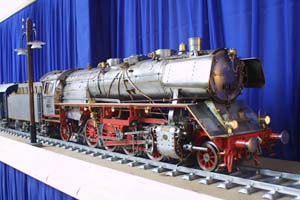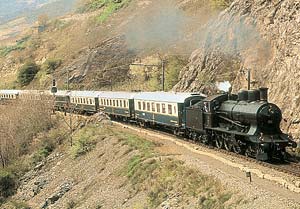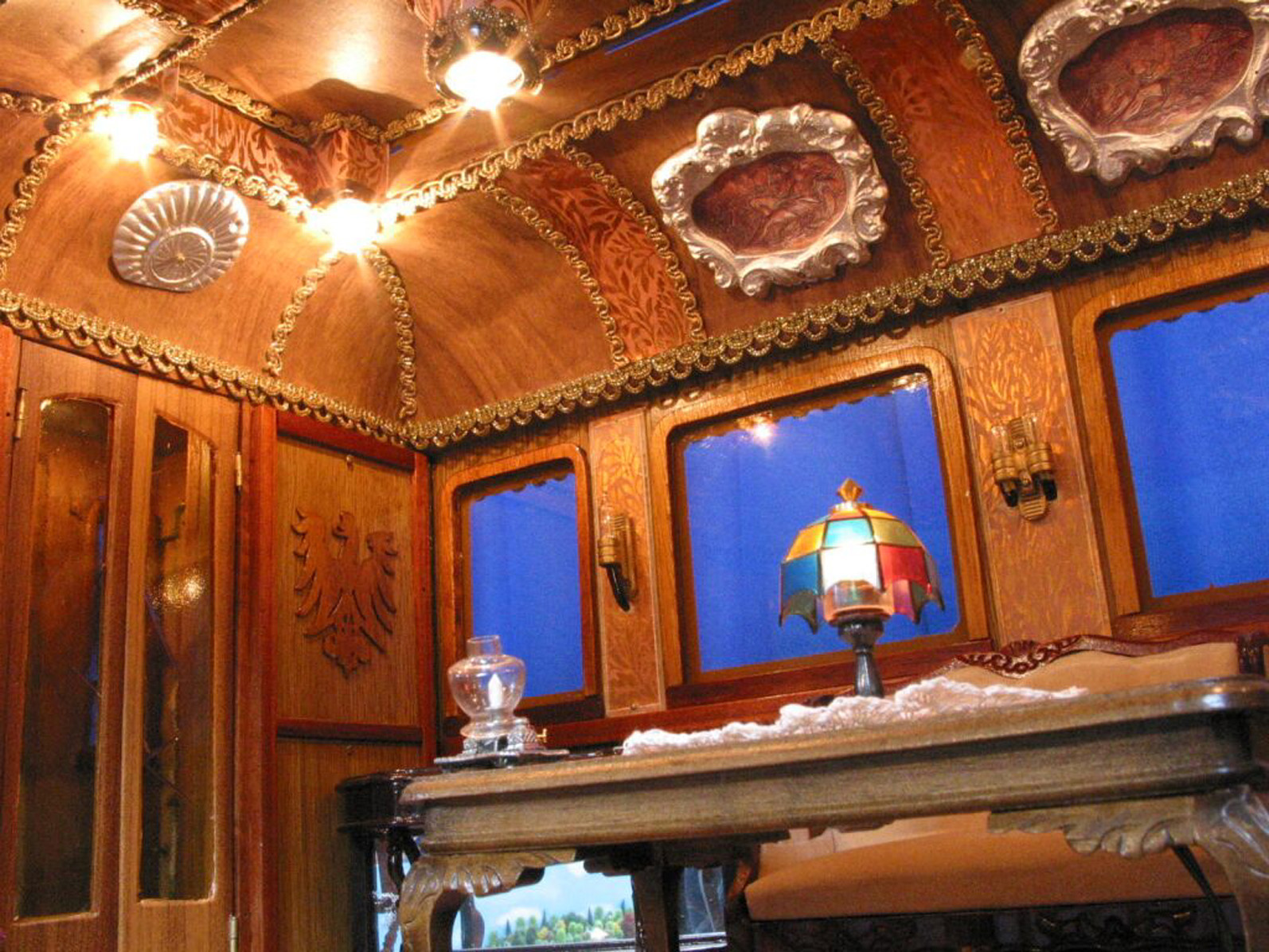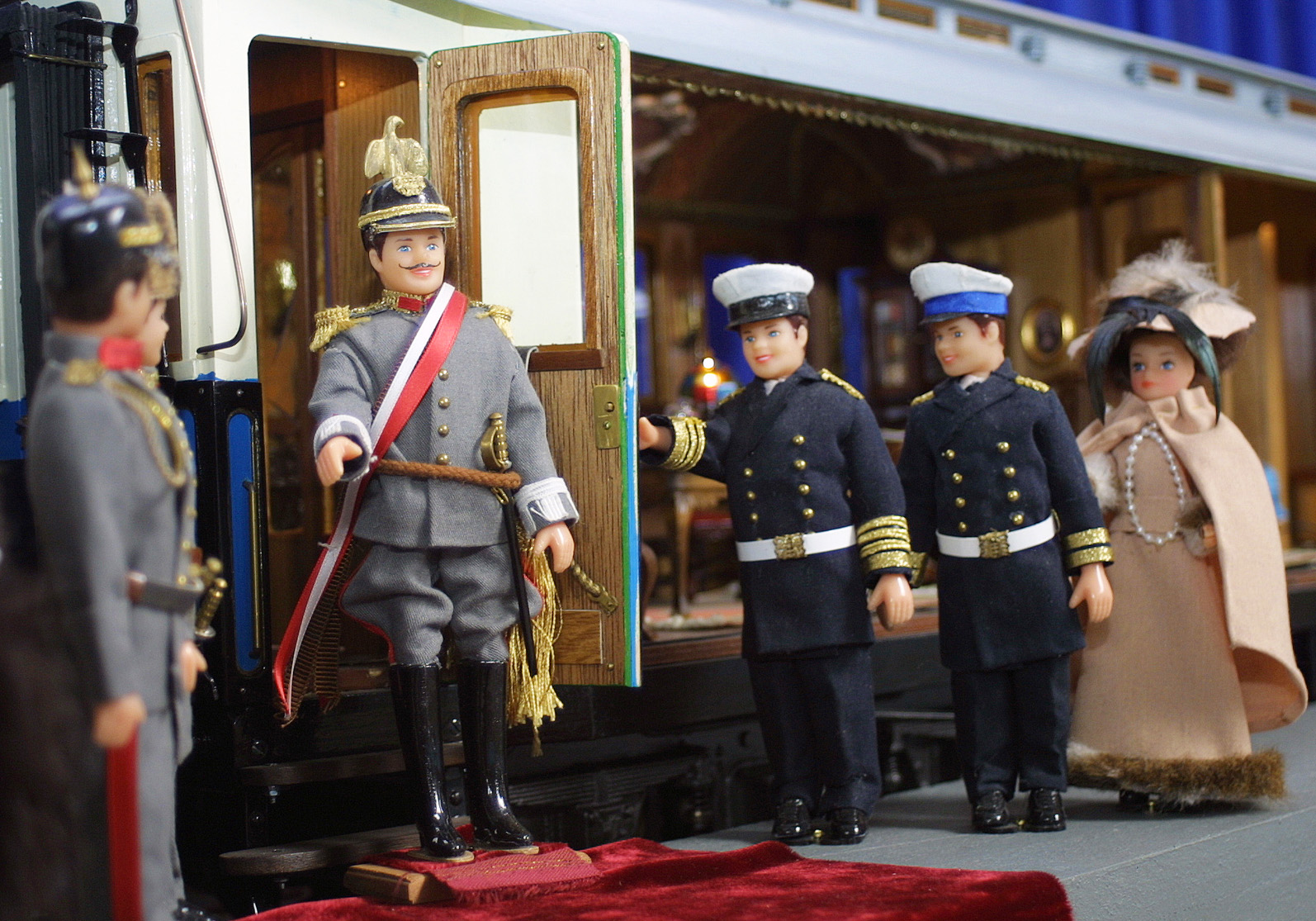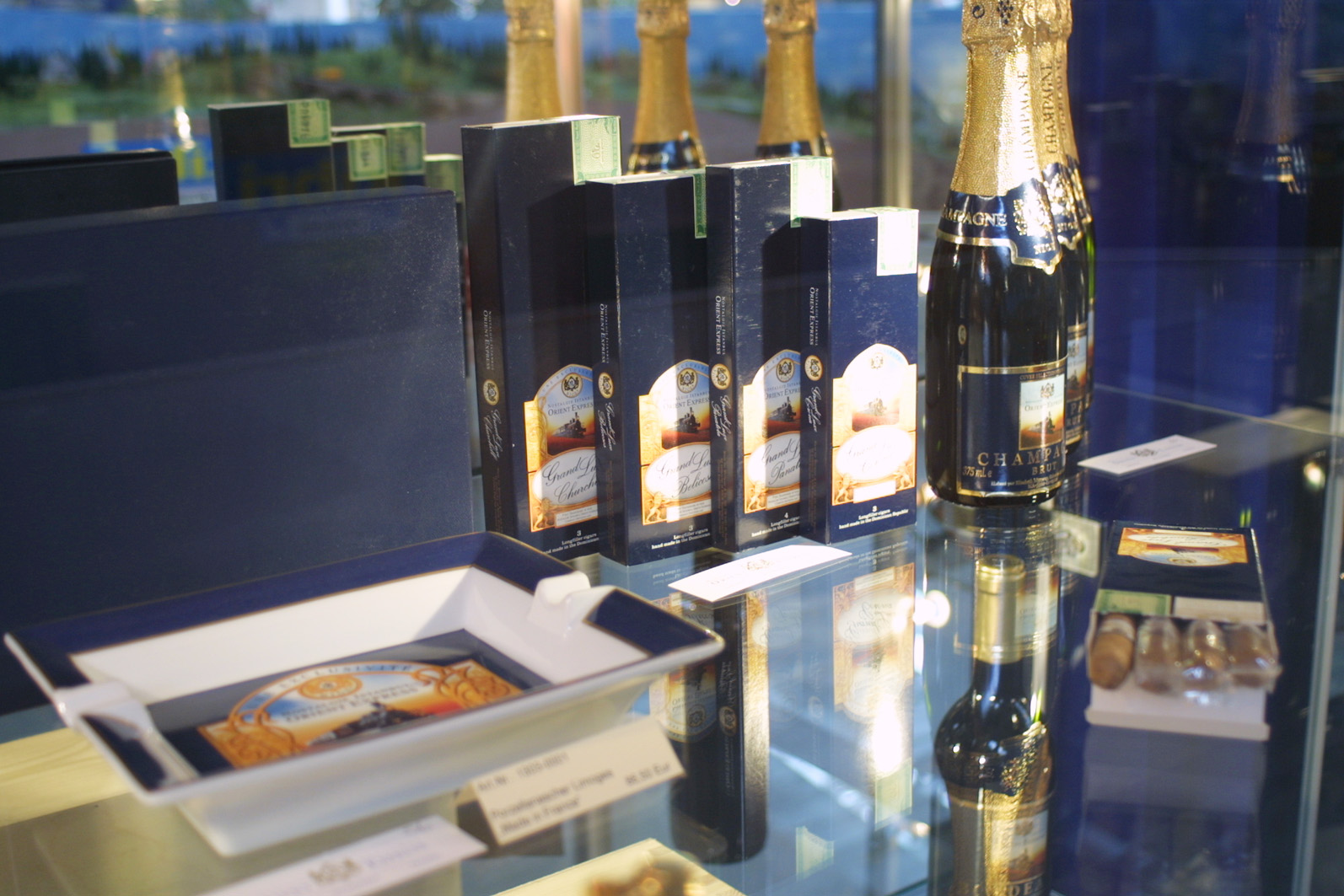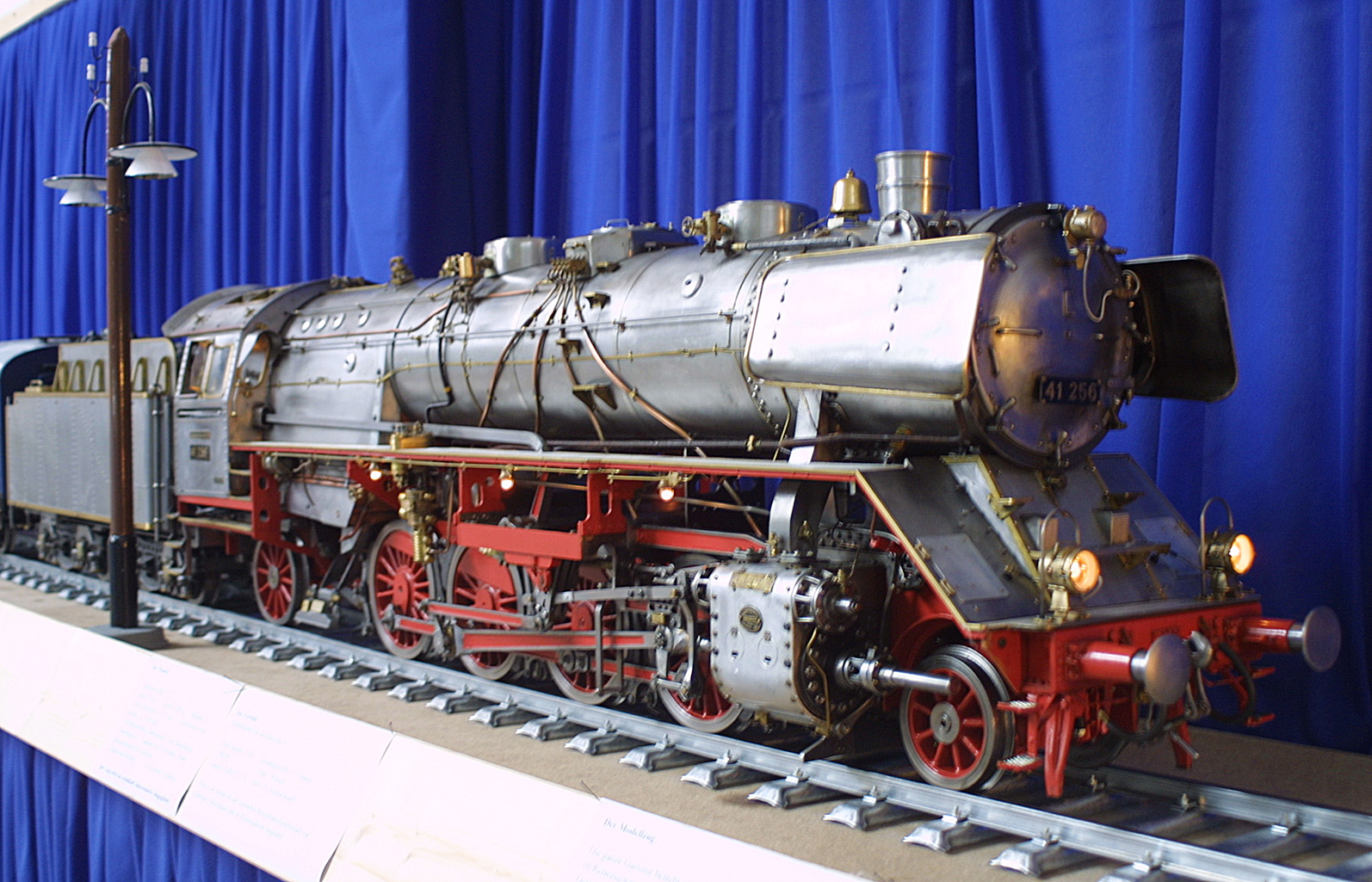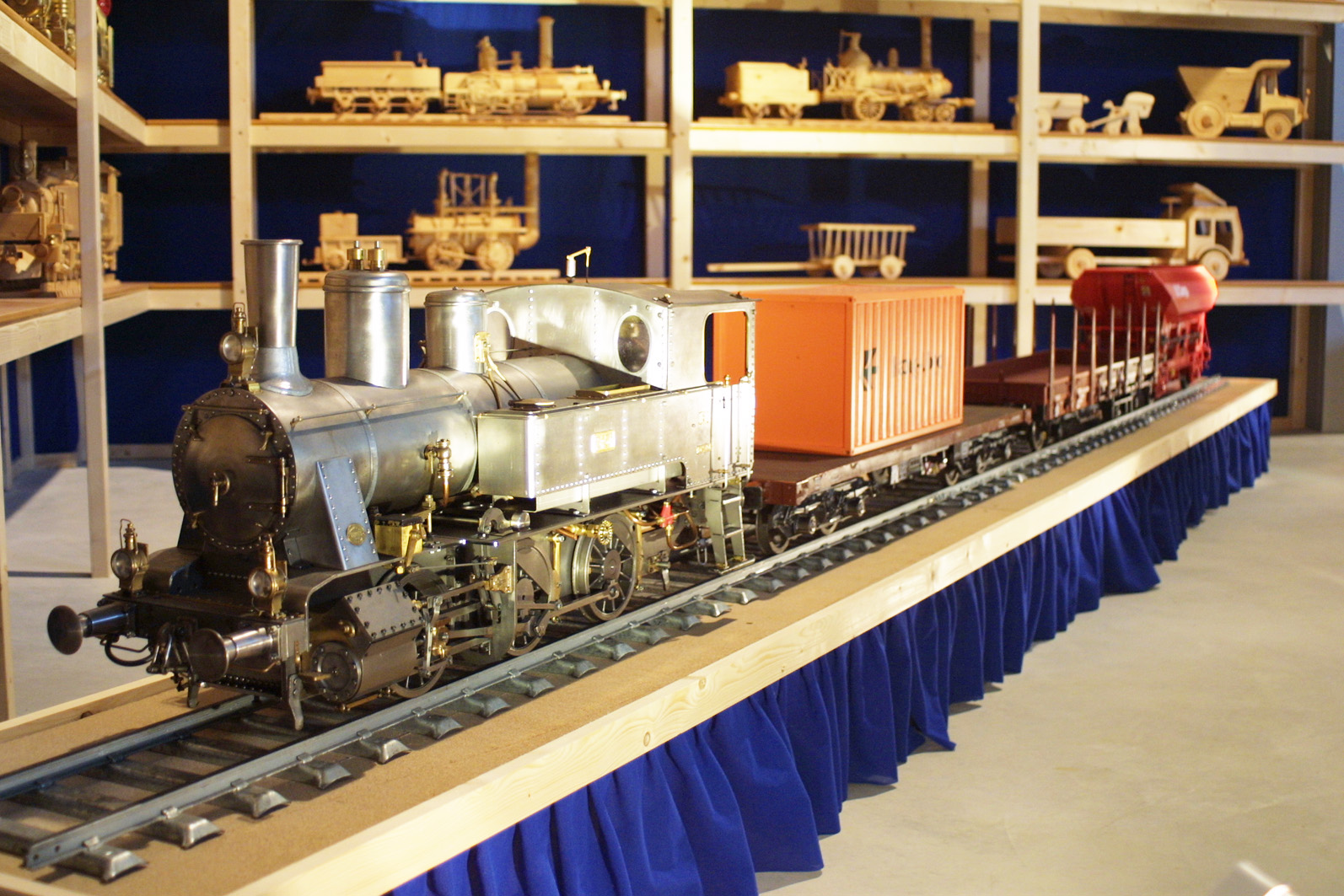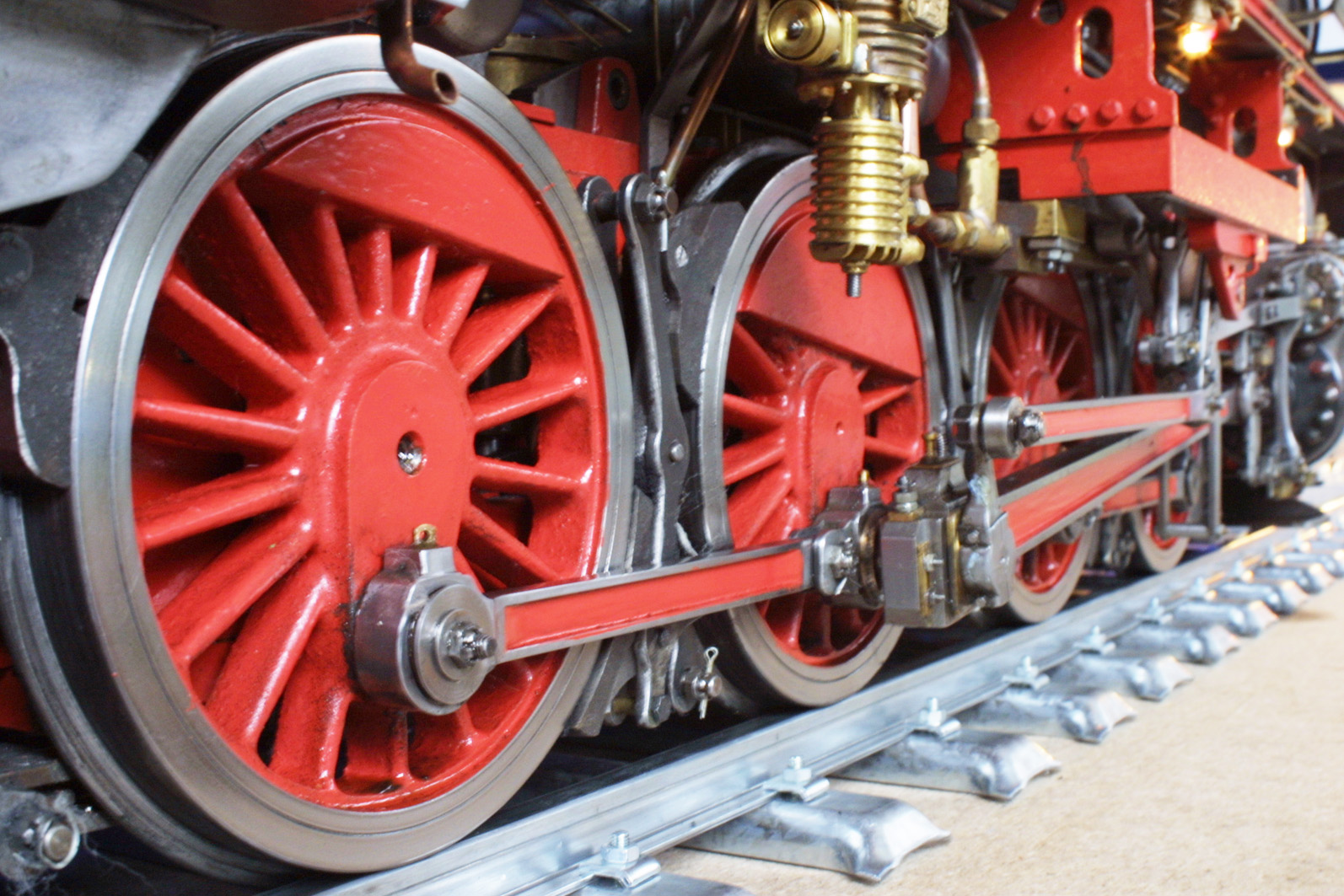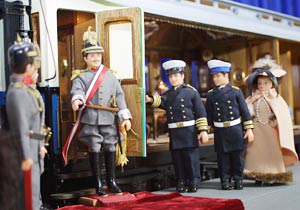Since 27 June 2002 presents a very spezial highlight of the model construction in the model railway Wiehe:
It is a 21 meter long, fully functional replica of the legendary Orient-Express on a scale of 1:11 / Trace 5. The locomotive is a replica of the steam locomotive BR41, ther 10 wagons are appended, with their role models are deceptively real lookalike.
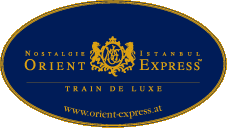
The model cars at a glance
Original trains
The first "Express d`Orient" was launched on 5 January 1883 from Paris. This was followed by countless other Express trains across Europe. Only COMPAGE INTERNATIONALE DE WAGONS - LITS ET DES GRANDES EXPRESS EUROPEENS, known under the acronym CIWL, led about 30 such luxury trains. Until 1938 were not less than 44 other Express train lines led by Europe - with each other, sounded full name.
Model trains
The entire set consists of a unit locomotive BR41 and 10 wagons after nostalgic original. Overall length: 21m. It is fully functional on the track 5 and the internatione rule held 1:11 scale. All the wagons have the authentic decoration and lightning. All doors can be opened. They was built by A. Sonntag and M. Knupfer in the period from 1991 to 1999.
The locomotive original
The original is the Schlepptenderlok Series 41:
First Year of manufacture: 1934
Total weight: 157 tons
power: 1.900 hp
Vmax: 90 km/h
length about Buffer: 23.1 meter
Manufacturer: Fa. Schwarzkopff
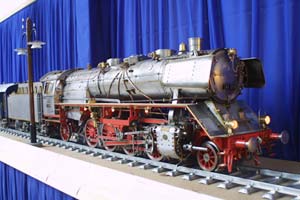 |
The model: The model represents the unit locomotive BR 41222. Length: 2.20 meters Weight: 200 kg Scale: 1:11 Internat. Gauge: Gauge 5 (127mm) Boiler pressure: 8 bar Construction period: approx 7.000 hours Builder & Owner: Manfred Knupfer |
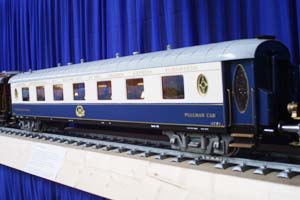 |
CIWL-Pullmanncar A Salon-coaches of CIWL society. These wagons were usually twice in the train set, one equipped with a kitchen. The travelers were thus independent of a dining wagon. These cars were manufactured from 1926 (in steel construction) and replaced with the time the previous Express train with the typical teak exterior walls. |
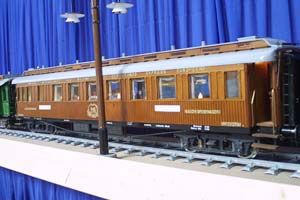 |
Court and state trains Around the turn of the century there was practically no motor traffic effectively. Traveling from state representatives, with their entourage was therefore only possible by train. Some special wagons becam whol court trains. Virtually all European governments had own trainsuite at this time, some with over 20 wagons. Evidence has been in special cases such court and stat train terminated Express trains. Such a set could represent the model train in Wiehe. |
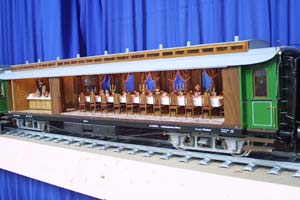 |
Salon-dining Built from 1905 to 1924. In this vehicle were compared to the normal dining fewer seats, but much elevated ease. |
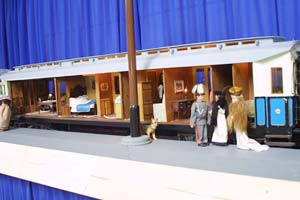 |
Court train dining-hall The dining for larger, festive occasions. Often foreign guests were here to entertain. At a 22-seater table is place for a larger society. Left is the cupboard space. In the model, all the plate covers provide with a different motif provide. Whether caviar was served, has not survived. Here he was ever served ;o) |
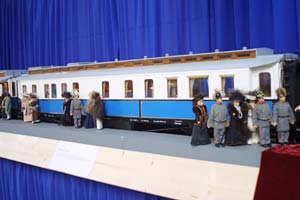 |
Salonwagon of the Emperor In this wagon traveled the last German Emperor (Willhelm II.). The model of execution furniture, wall and ceiling meet the equipment original. In the valut are therefore including the 7 major German rivers allegorically represented. The smaller compartments were right for the adjutant stay. |
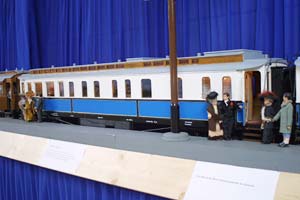 |
Salonwagon of the Empress The members of the imperial family had one wagon. Again, the wagon equipment and furniture are authentic. |
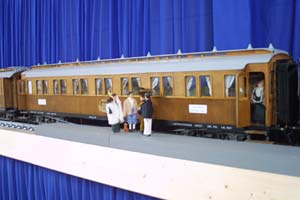 |
Imperial Salon Wagon The court trains were depending on the purpose of the journey together. In addition to the saloon wagong for heads of state were coupled dining wagon, men's and women's court wagons, kitchen wagons, machinery wagons, personnel wagons and bunch wagon. |
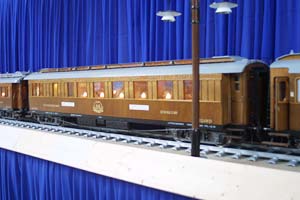 |
Coaches 1st Class Earlly design around 1900. At that time virtually all express wagon were manufactured in the typical teak model. |
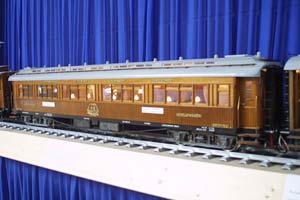 |
CIWL-dining in teak finish. This car was widespread and to find in every express train. |
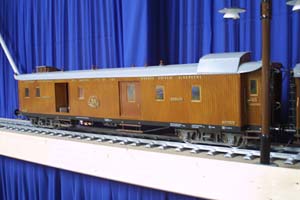 |
Luggage trolleys In these Express van, only the often extensive baggage of passengers were transported. From the elevated roof superstructures officialss had observed while driving the train to break down or other interference. These wagons - often two - were terminated at the front and at the and as protectuib agaubst possibly wagon accidents. |




